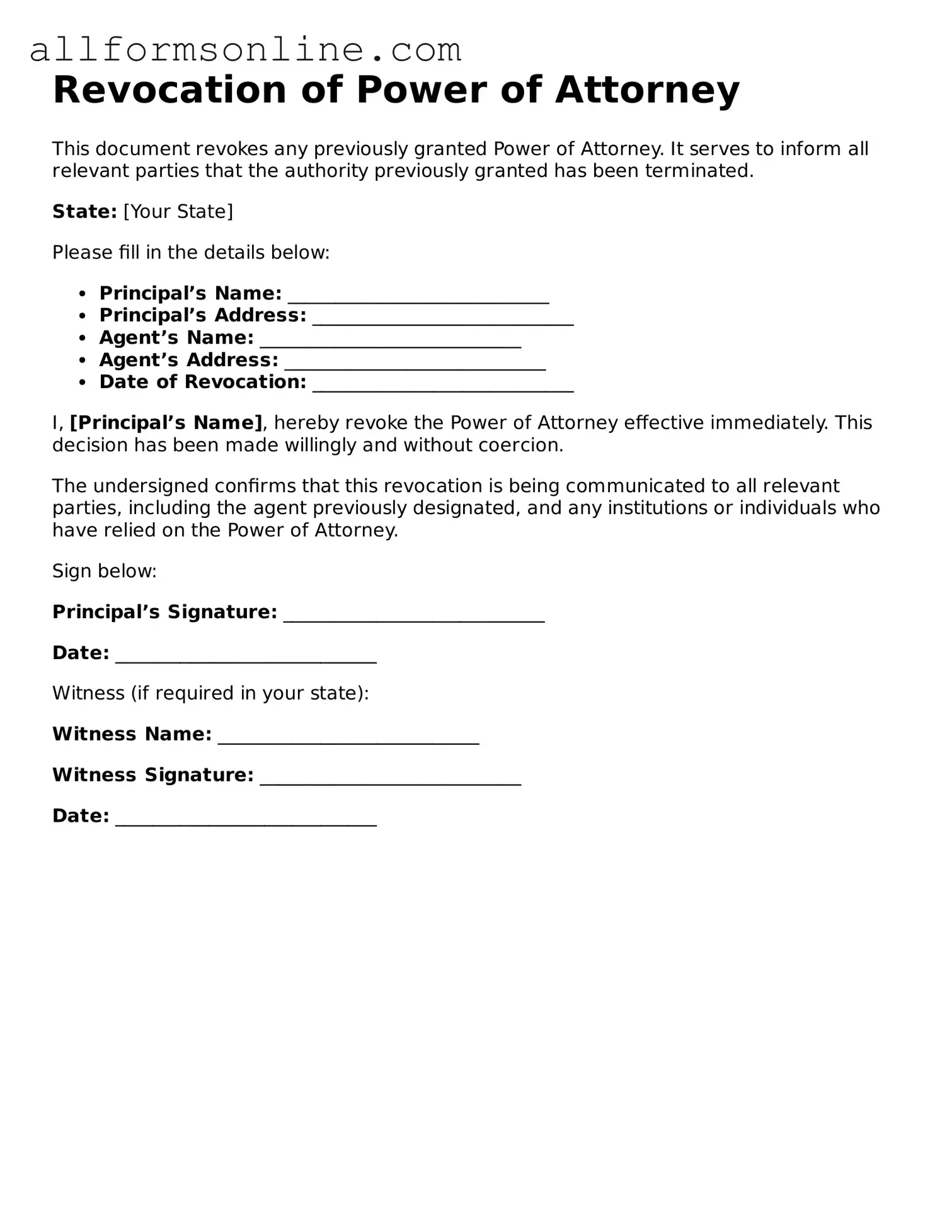What is a Revocation of Power of Attorney form?
A Revocation of Power of Attorney form is a legal document that cancels a previously granted power of attorney. This means that the person who was given authority to act on your behalf can no longer do so. It’s important to use this form if you want to ensure that your previous agent no longer has any power to make decisions for you.
When should I use a Revocation of Power of Attorney form?
You should use this form if you want to terminate the authority of someone who was acting as your agent under a power of attorney. This could be due to various reasons, such as a change in your relationship with the agent, their inability to perform their duties, or if you simply wish to appoint a different person to act on your behalf.
Do I need to notify the agent after revoking their power of attorney?
Yes, it’s advisable to inform the agent that their power of attorney has been revoked. While the revocation is effective upon signing the form, notifying the agent helps prevent any confusion or disputes in the future.
Is there a specific format I need to follow for the Revocation of Power of Attorney form?
The form should clearly state your intention to revoke the power of attorney. Include your name, the name of the agent, and any relevant details about the original power of attorney. While there isn’t a strict format, clarity is key. You may want to consult a legal professional to ensure it meets your needs.
Do I need witnesses or notarization for the Revocation of Power of Attorney?
Requirements for witnesses or notarization can vary by state. Some states require the revocation to be notarized or witnessed to be valid. It’s best to check your state’s laws to ensure compliance and avoid any issues.
Can I revoke a power of attorney if I am incapacitated?
If you are incapacitated, you typically cannot revoke a power of attorney. It’s essential to make these decisions while you are still capable of understanding and executing legal documents. If you anticipate needing to revoke a power of attorney in the future, consider doing so now.
What happens to the power of attorney after I submit the Revocation form?
Once you submit the Revocation of Power of Attorney form, the previous agent no longer has any authority to act on your behalf. However, it’s a good idea to provide copies of the revocation to any institutions or individuals that were relying on the original power of attorney.
Can I create a new power of attorney after revoking the old one?
Yes, you can create a new power of attorney at any time after revoking the old one. Just ensure that the new document is clear and specifies the new agent’s authority. It’s also a good practice to inform the new agent about their responsibilities and the revocation of the previous agent.
What should I do if I can’t find the original power of attorney?
If you cannot find the original power of attorney, you can still create a Revocation of Power of Attorney form. Clearly state that you are revoking any previous powers of attorney, even if you do not have the document in hand. Make sure to notify the agent and any relevant parties about the revocation.
Where should I keep the Revocation of Power of Attorney form?
Store the Revocation of Power of Attorney form in a safe place, such as a locked file or safe. It’s also wise to share copies with your new agent, family members, or anyone else who might need to know about the change in your power of attorney arrangements.
